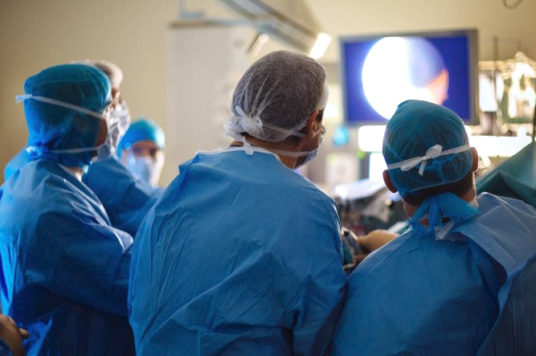St George’s study into aortic aneurysm repairs published
A study led by a team at St George’s has shown that surgeons in England operate significantly less often on aortic aneurysms in the population than in the US, and that the death rate here in the UK for the condition is over twice that in the States.
The results have been published in the New England Journal of Medicine, which is one of the most influential medical journals in the world.
An aortic aneurysm is a diseased swelling of the body’s largest blood vessel. If an aneurysm is left to rupture it is usually fatal. The risk of fatal rupture increases with aneurysm size, but although there are international guidelines suggesting thresholds at which surgery should be considered, clinical practice varies considerably in different countries. The impact of this variation on a country’s rate of death due to aortic aneurysms has never previously been investigated.
Researchers in London and Harvard, led by Dr Alan Karthikesalingam, who holds positions both here at the Trust and with the university, looked at several national datasets for abdominal aortic aneurysm repair, comparing the rate of aneurysm repair and the diameter at the time of repair between England and the USA.
They found that for the condition of aortic aneurysm, the rates of repair (operations) in England were half that of the USA, with repair being done at a higher average diameter. The weighted mean diameter for aneurysm undergoing repair in England was 6.37 cm, compared to the weighted mean diameter at repair in the USA of 5.83 cm. International guidelines currently suggest aneurysm repair should be considered at 5.5cm in men and 5.0cm in women.
The rate of death in England from ruptured aneurysm was double that of the USA, while deaths from aneurysm-related causes were over three times more common than in the USA.
Dr Karthikesalingam, Clinical Lecturer in Vascular Surgery at St George’s, University of London, who also works in the vascular service here at the Trust, said: “Aneurysm diameter is the best predictor of whether an aneurysm will rupture, and the risk increases as the diameter increases. Although guidelines specify that 5.5cm is a reasonable threshold to consider surgery for infrarenal aneurysms, the risk of rupture must be balanced against personalised procedural risks, life expectancy and preference.”
“We know there is considerable variation in international practice, with large numbers of patients undergoing repair below guideline thresholds. Deciding whether to repair an aneurysm, and selecting the best technique, involves carefully balancing the risks and is for the patient and clinician to discuss.”
We provide a comprehensive vascular service here at St George’s for patients, including a comprehensive 24/7 emergency service. We also provide all secondary and tertiary vascular services.
For more information, please view the press release on the St George’s, University of London website.


